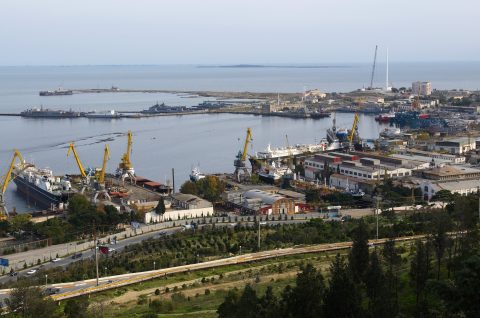Why Malaszewicze is the most debated place on the New Silk Road

In the rail journey from Europe to China, the border crossing of Malaszewicze is one of the main bottlenecks, many have stated. But Polish operator PKP Cargo said last week that the problems have been solved and the border crossing should not be considered a bottleneck any longer.
The Małaszewicze-Brest border crossing connects Poland and Belarus and is the most popular border crossing on the railway route between Europe and China. Here, cargo is unloaded from trains crossing through the CIS region onto trains able to operate on European gauge, or the other way around. Although alternative border crossings have been opened, Małaszewicze-Brest remains the most used gateway. But it is probably also the most discussed location on the New Silk Road.
Discussion
“The issues have been solved. There are currently no problems with the loading of goods. On the contrary – to use the full business potential of Małaszewicze, a dynamic increase of trains running through this border point is needed”, said the deputy director of the Bureau for Promotion and Investor Relations of PKP Cargo Andrzej Banucha last month.
“This is ridiculous. At the moment we face heavy backlog in Brest/Malaszewicze; the crossing time is between four and six days per train. If we had a really functional terminal they could easily handle ten or more trains per day, but there are important investments to be done – and more crossing points to be erected”, said a logistics provider from Switzerland.
Construction work
It is a matter of timing, according to Dick van Beek, Global Logistics Director EMEA at Lenovo, a shipper on the route. The transit is sometimes smooth, but can be a hurdle at other times. This is because there is often construction work carried out, he explained. “The facilities are not completely ready, and sometimes there is work in progress. At one point, a bridge was closed and we could not make use of the track. Circumstances like these make it hard to predict a lead time”, he said.
Indeed, PKP Cargo currently invests in the development of the Małaszewicze logistics centre, where both track infrastructure and terminals will be expanded. “In 2022, the capacity of Małaszewicze will increase fourfold. We currently serve about 25 trains from China per week, and we still have spare capacity. After the expansion, the connection from China to Europe via Małaszewicze will be even more attractive for European and Asian enterprises, said President Czesław Warsewicz.
Shortage of equipment
According to Thomas Kowitzki, Head of Chinarail/Multimodal, Europe at DHL Global Forwarding it is too easy to say that the border crossing at Małaszewicze is the only bottleneck. “The journey between Europe and China is long and there are many parties involved. Add to that the large volumes passing through, which we see increasing over the last few years. In a situation like that, it is necessary to have proper operational planning and synchronisation of the different operational systems, i.e. the Chinese, CIS and European railways.
“Sometimes, delays occur due to a shortage of equipment”, he argued. Trains in European direction are not always directly available. Shortages lead to containers being stalled at the border, causing days of delay. “In such a case, it is not a problem only caused by the border operator”, Kowitzki added.
Transparency
A point of frustration for shippers and logistics companies is the lack of information, Kowitzki explained. A temporary construction project should not be a problem if it was properly communicated, and this is currently not always happening, he added. “Information about construction projects and the expected impact on traffic should be shared with those involved and detailed enough so we can find an alternative for the urgent cargo. We often hear about such situations too late, when they are already in place. More proactivity is needed in such situation.”
A logistics company from Hong Kong was informed last week that due to a sudden increase in train volumes caused by special trains and an army manoeuvre is causing heavy delays of up to four days on all train connections routed via the border. “As we currently have six full trains on the way with around 210 containers we started to be concerned and sourced more information. One party stated that the delay would be an additional five days, while another said it would be approximately three days and the congestion would last for at least three weeks.”
Alternative routes
As the volumes of traffic between Europe and China have been on the rise, alternative border crossing have been opened. Rail traffic is now available via Kaliningrad. The cargo is loaded onto the European gauge railway network at the Dzerzhinsky-New station in the Russian enclave. Traffic is also now routed via Lithuania and via Ukraine, for destinations more south in Europe.
However, according to people involved there is no capacity issue. The border point now has the capacity to handle three to four trains a day, and this will be increased with the completion of the new facility. As Peter Plewa, Executive Board of Duisport argued at a conference last year: “There is enough space to operate, but if operations are not managed efficiently, they will not be improved.”
Also read:





